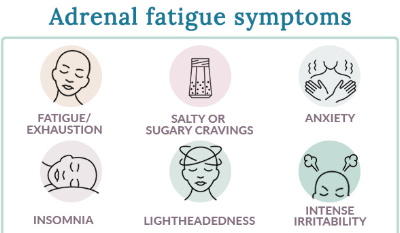Fibromyalgia is a complex condition that affects millions of people worldwide, leading to chronic pain, fatigue, brain fog, and sleep disturbances. Many researchers and health practitioners believe that adrenal fatigue could be a root cause or contributing factor to fibromyalgia symptoms.
But what exactly is adrenal fatigue? How is it connected to fibromyalgia? And can treating adrenal fatigue improve fibromyalgia symptoms? In this article, we will explore the relationship between fibromyalgia and adrenal fatigue, their overlapping symptoms, and potential treatment approaches.
Understanding Adrenal Fatigue
The adrenal glands are small, hormone-producing glands located above the kidneys. They play a critical role in regulating stress responses by releasing cortisol, adrenaline, and other hormones that help the body cope with physical and emotional stress.
Adrenal fatigue is a term used to describe a dysfunction in the adrenal glands caused by chronic stress, illness, or hormonal imbalances. When the adrenal glands become overworked, they fail to produce adequate levels of cortisol and other hormones, leading to fatigue, brain fog, muscle weakness, and an inability to handle stress.
1. Can Fibromyalgia Cause Adrenal Fatigue?
Fibromyalgia is closely linked to chronic stress and nervous system dysregulation, which may overburden the adrenal glands over time. Since people with fibromyalgia experience persistent pain and sleep disturbances, their bodies remain in a state of heightened stress response. This ongoing stress forces the adrenal glands to continuously release cortisol, which can eventually lead to adrenal exhaustion.
Key Reasons Fibromyalgia Can Contribute to Adrenal Fatigue:
✔ Chronic Stress: Long-term physical pain and emotional distress put excessive strain on the adrenal glands.
✔ Poor Sleep Quality: Lack of deep sleep disrupts cortisol regulation, leading to adrenal dysfunction.
✔ HPA Axis Dysfunction: The hypothalamic-pituitary-adrenal (HPA) axis, which controls stress responses, is often dysregulated in fibromyalgia patients.
✔ Nutrient Deficiencies: Many fibromyalgia sufferers have low levels of magnesium, B vitamins, and vitamin D, which are essential for adrenal function.
As a result, fibromyalgia patients may develop adrenal fatigue, worsening their symptoms and creating a vicious cycle of exhaustion and pain.
2. Adrenal Fatigue vs. Fibromyalgia: How Are the Symptoms Similar?
Since both fibromyalgia and adrenal fatigue affect energy levels, pain perception, and stress responses, their symptoms often overlap, making diagnosis difficult.
Comparing Symptoms of Fibromyalgia and Adrenal Fatigue:
| Symptoms | Fibromyalgia | Adrenal Fatigue |
|---|---|---|
| Widespread Pain | ✅ Yes | ❌ No |
| Chronic Fatigue | ✅ Yes | ✅ Yes |
| Sleep Disturbances | ✅ Yes | ✅ Yes |
| Brain Fog | ✅ Yes | ✅ Yes |
| Muscle Weakness | ✅ Yes | ✅ Yes |
| Anxiety & Depression | ✅ Yes | ✅ Yes |
| Sensitivity to Stress | ✅ Yes | ✅ Yes |
| Hormonal Imbalances | ❌ No | ✅ Yes |
As seen in the table, fibromyalgia and adrenal fatigue share many symptoms, making it essential to assess hormonal function in fibromyalgia patients.
3. How Adrenal Fatigue Worsens Fibromyalgia Symptoms
When the adrenal glands are not functioning optimally, fibromyalgia symptoms can become more severe. Some ways adrenal fatigue may worsen fibromyalgia include:
1. Increased Pain Sensitivity
Cortisol has an anti-inflammatory effect, helping the body manage pain. When cortisol levels are low due to adrenal fatigue, fibromyalgia-related pain can intensify.
2. Chronic Fatigue and Weakness
Adrenal fatigue leads to low energy levels, making fibromyalgia-related fatigue even more debilitating. This can result in muscle weakness, reduced endurance, and difficulty performing daily tasks.
3. Poor Stress Tolerance
Fibromyalgia patients already have an overactive nervous system. When adrenal fatigue is present, their ability to handle physical and emotional stress decreases further, leading to mood swings, anxiety, and increased pain sensitivity.
4. Sleep Disturbances and Brain Fog
Cortisol plays a role in regulating the sleep-wake cycle. Low adrenal function can lead to insomnia, unrefreshing sleep, and cognitive dysfunction, making fibromyalgia brain fog worse.
4. How to Support Adrenal Health in Fibromyalgia
Since adrenal fatigue and fibromyalgia are closely linked, addressing adrenal dysfunction may help reduce fibromyalgia symptoms and improve overall well-being.
1. Reduce Stress and Overstimulation
- Practice mindfulness, meditation, and deep breathing to calm the nervous system.
- Engage in gentle activities like yoga or tai chi to manage stress.
- Set healthy boundaries to avoid overwhelming situations.
2. Improve Sleep Quality
- Maintain a consistent sleep schedule and create a relaxing bedtime routine.
- Avoid blue light exposure from screens before bed.
- Try magnesium and melatonin supplements to support deep sleep.
3. Balance Nutrition and Blood Sugar
- Eat a protein-rich, whole-food diet to stabilize blood sugar and prevent energy crashes.
- Avoid processed foods, caffeine, and excess sugar, which can strain the adrenal glands.
- Consume healthy fats like avocado, nuts, and olive oil to support hormone production.
4. Support the HPA Axis with Adaptogenic Herbs
Certain adaptogenic herbs can help balance cortisol levels and support adrenal health:
✔ Ashwagandha – Reduces stress and improves energy.
✔ Rhodiola Rosea – Enhances stamina and mental clarity.
✔ Holy Basil (Tulsi) – Lowers cortisol and improves sleep.
✔ Licorice Root – Supports adrenal function and reduces fatigue.
5. Stay Hydrated and Exercise Gently
- Drink plenty of water to prevent dehydration and adrenal strain.
- Engage in low-impact exercise, such as walking or swimming, to improve circulation and reduce muscle tension.
5. Can Treating Adrenal Fatigue Improve Fibromyalgia Symptoms?
Since adrenal fatigue may contribute to fibromyalgia symptoms, addressing adrenal health could lead to:
✔ Reduced pain sensitivity
✔ More energy and less fatigue
✔ Better stress tolerance
✔ Improved sleep quality
While treating adrenal fatigue won’t cure fibromyalgia, it can help reduce symptom severity and improve overall quality of life.
Conclusion: Addressing Adrenal Fatigue to Manage Fibromyalgia
Fibromyalgia and adrenal fatigue are closely interconnected, with chronic stress and nervous system dysregulation playing a major role in both conditions. Many fibromyalgia patients experience symptoms of adrenal fatigue, such as low energy, brain fog, and poor stress tolerance, which can make their condition worse.
By supporting adrenal health through stress reduction, proper nutrition, quality sleep, and adaptogenic herbs, fibromyalgia sufferers may experience improved energy levels, better pain management, and enhanced well-being.

Click Here to Visit the Store and find Much More….
For More Information Related to Fibromyalgia Visit below sites:
References:
Fibromyalgia Contact Us Directly
Click here to Contact us Directly on Inbox
Official Fibromyalgia Blogs
Click here to Get the latest Chronic illness Updates
Fibromyalgia Stores



